Top 10 Free Eq Plugins
Quick Answer, in No Particular Order
- EQ1A: Mellowmuse
- TinyQ: lkjb
- PTEq-1A: Ignite Labs
- PTEq-X: Ignite Labs
- QRange: lkjb
- LCF: Analog Obsession
- Rare: Analog Obsession
- SonEQ: Sonimus
- Overtone GEQ: Voxengo
- Marvel GEQ: Voxengo
Top 10 Free Eq Plugins in Detail
All of the plugins on this list are completely free and can be easily downloaded from their respective websites, or from VST4Free . Every plugin on this list is both windows and OSX compatible and can be downloaded in VST or AU component file formats.
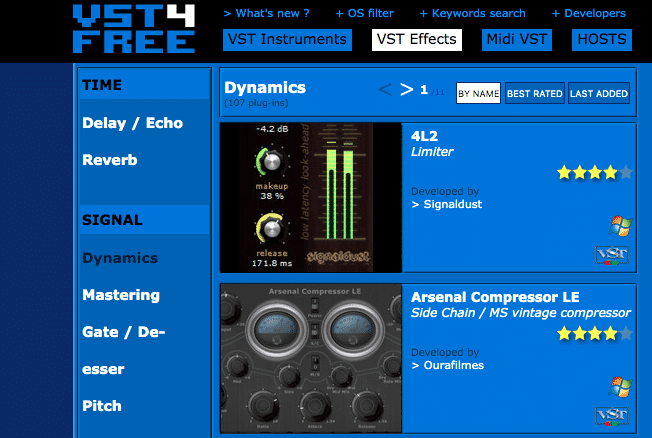
The majority of these plugins can be downloaded from VST4Free.
Furthermore, any equalizer that includes dynamic equalization or compression in its design will be saved for another list.
Try these plugins for yourself to see if they work well for you!
If you’d like to have a mix of your mastered using analog equalization, send it to us here:
We’ll master it for you and send you a free mastered sample of that mix.
10. EQ1A: Mellowmuse

The EP1A offers a simplistic design.
Sporting a low CPU intensive design, and an easily accessible interface, the EQ1A from Mellowmuse makes equalization simple. It offers 4 bands of sweepable equalization as well as a high pass filter.

These bands can easily be bypassed by clicking the orange button next to the rotary.
Each band can quickly be bypassed, as can the high-pass filter for a quick A B comparison. Although the EQ1A is modeled after classic analog outboard equalizers, the effect the EQ1A has on your signal is minimalistic in terms of harmonic generation or distortion.

A 500Hz sine wave processed with the EP1A. Notice no additional harmonics are generated.
This makes the EQ1A perfect for simplistic and natural-sounding equalization. Given its low CPU intensive design, the EQ1A is great for individual instruments as well as adding subtle equalization to a full mix.
The bands included in the FEQ1A are as follows:
- High Pass: 10Hz - 1kHz / sweepable Q.
- Low Shelf: 30Hz - 500Hz.
- Low-Mid Range: 70Hz - 2kHz / sweepable Q.
- High-Mid Range: 500Hz - 6kHz / sweepable Q.
- High-Shelf: 1.5kHz - 18kHz
Possible Applications:
- Equalizing individual instruments
- Surgical Equalization
- Stereo Mastering Equalization
9. TinyQ: lkjb
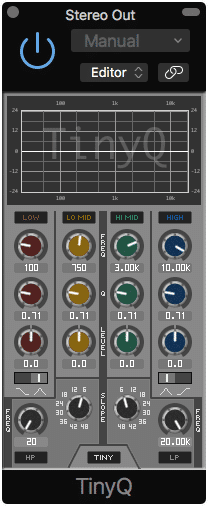
The TinyQ takes up a small amount of space, as the name would suggest.
The simplistic yet stylized design of the TinyQ equalizer make is an accessible and easy to use plugin. The variably sized design makes it a great way to work on multiple forms of processing at once, while still keeping each form of processing visible.
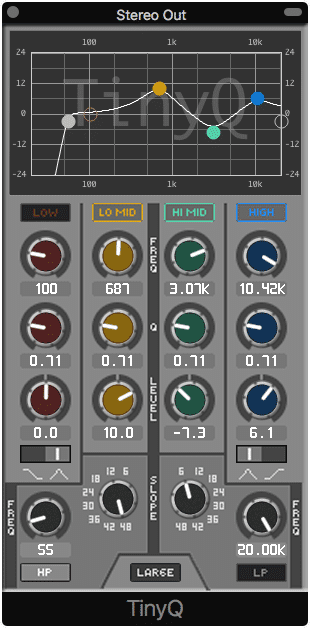
The window size can be changed by clicking the button at the bottom of the plugin.
Visually speaking, the TinyQ can be set to Tiny, Large, or Huge window sizes with the simple click of a button. Sonically speaking, the TinyQ offers nondestructive equalization, that cleanly amplifies and attenuates frequency bands.
With a total of 4-bands , each band can range from 20Hz to 20kHz and can be amplified up to 24dB ; a high-pass and low-pass filter are included as well. The high-pass and low-pass filters implement a smoothly parabolic “Butterworth” curve, with orders of attenuation ranging from 6dB to 48dB per octave.
The “Low” band and “High” band curves can be either shelf filters or peak/bell filters.
Possible Applications:
- Equalizing individual instruments
- Surgical Equalization
8. PTEq-1A: Ignite Labs

The PTEq-1A is modeled after classic equalization hardware.
The PTEq-1A offers a similar design to the famous Pultec EPQ-1A , with a boost and attenuate option for low frequencies, and a boost and attenuate function for high frequencies. The simplistic design offers minimalistic options when it comes to setting your curve’s Q.

This Pultec EQP-1A was the inspiration for the PTE-1A
With that said, you do have the option between a “sharp” or “broad” bandwidth when amplifying the high-frequency range, but this is about as complex as this equalizer allows you to be.
Considering that the high-frequency boost and attenuation functions introduce two unique curves, it is possible to equalize more specifically and intentionally; however, doing so will take some finesse.
The PTEq-1A also offers a “Tube” emulation function which introduces harmonic generation. This “tube” distortion can be bypassed, as can any equalization implemented to your signal.

Notice the 2nd order harmonic, at 1000Hz.
The output function allows you to get more character from the tube-based harmonic generation, or to scale it back if necessary.
Although the equalization curves mimic that of the Pultec EPQ-1A, the extent to which the harmonic generation accurately emulates the Pultec EPQ-1A is debatable. Keep this in mind which utilizing this free eq plugin.
Possible Applications:
- Equalizing individual instruments
- Implementing broadband, natural-sounding equalization
- Implementing “Tube” based harmonic generation
- Stereo Mastering
If you’d like to learn more about tube-based harmonic generation, check out one of our blog post that covers that topic:
It details the various forms of harmonic generation caused by analog equipment.
7. PTEq-X: Ignite Labs

The PTEq-X emulates 3 various plugins.
Ignite Lab’s PTEq-X is a culmination of 3 various Pultec emulations. On top is an emulation of Pultec’s mid-range equalizer, the MEQ-5.

This top section emulates the Pultec MEQ-5.
Ignite Lab’s “MQ5” offers the same “peak, dip, peak” options as the Pultec, with an overall equalization range of 200Hz to 7kHz . The first “peak” offers 5 incremental frequencies from 200Hz to 1kHz , with 13.5 dB of available amplification.
The “dip” offers 11 incremental frequencies from 200Hz to 7kHz, with 17.5dB of attenuation. And the last “peak” offers an additional 5 incremental frequency steps from 1.5kHz to 5kHz, with 13.5dB of amplification available.
In the middle is an emulation of the Pultec EPQ-1A , which offers the same functionality detailed in the PTEq-1A section detailed directly above; however, with advanced functionality regarding harmonic generation and tube emulation.

This reimagining of the EQP-1A offers an adjustable tube function.
The 4 tube functions include:
ECC81: In this plugin the ECC81 option introduces quiet low to mid order harmonics.
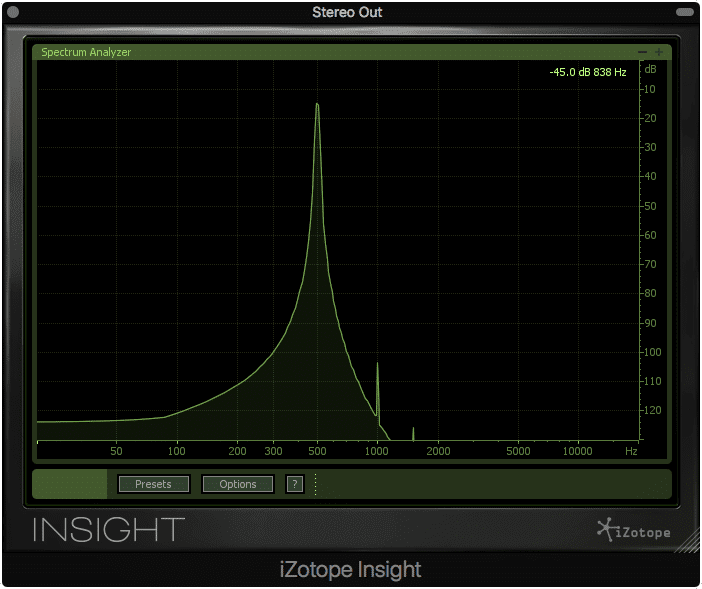
1st and 2nd order harmonics present.
ECC82: The ECC82 option introduces louder low to mid order harmonics than the previous option but in lesser quantity.
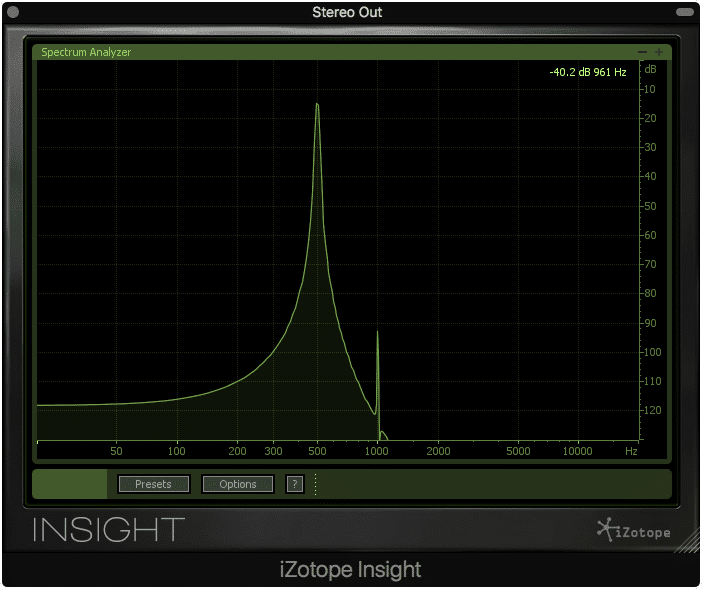
1st order harmonics present.
ECC83: This ECC83 option introduces the same harmonics as the ECC81 option; however, with an increased gain by roughly 20dB.

1st and 2nd order harmonics present.
ECC88: The ECC88 option introduces harmonics almost identical to the ECC82 option, but roughly 20dB quieter.
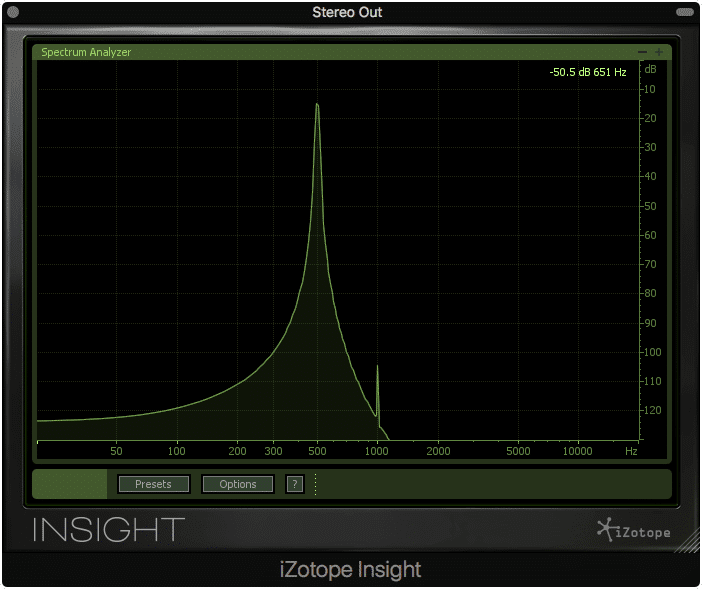
1st order harmonics present.
Lastly at the bottom is a high-pass and low-pass filter that doesn’t seem to be modeled directly off any particular Pultec equalizer, but mimics the style of their design. The high-pass filter can be implemented up to 2kHz, and the low-pass filter can be implemented down to 1.5kHz.

The last emulation offers a high-pass and low-pass filter.
The PTEq-X offers 2x oversampling, which comes in handy when working with higher frequencies in a lower sampling rate, such as 44.1kHz.
Possible Applications:
- Equalizing individual instruments
- Implementing broadband, natural-sounding equalization
- Implementing “Tube” based harmonic generation
- Stereo Mastering
6. QRange: lkjb
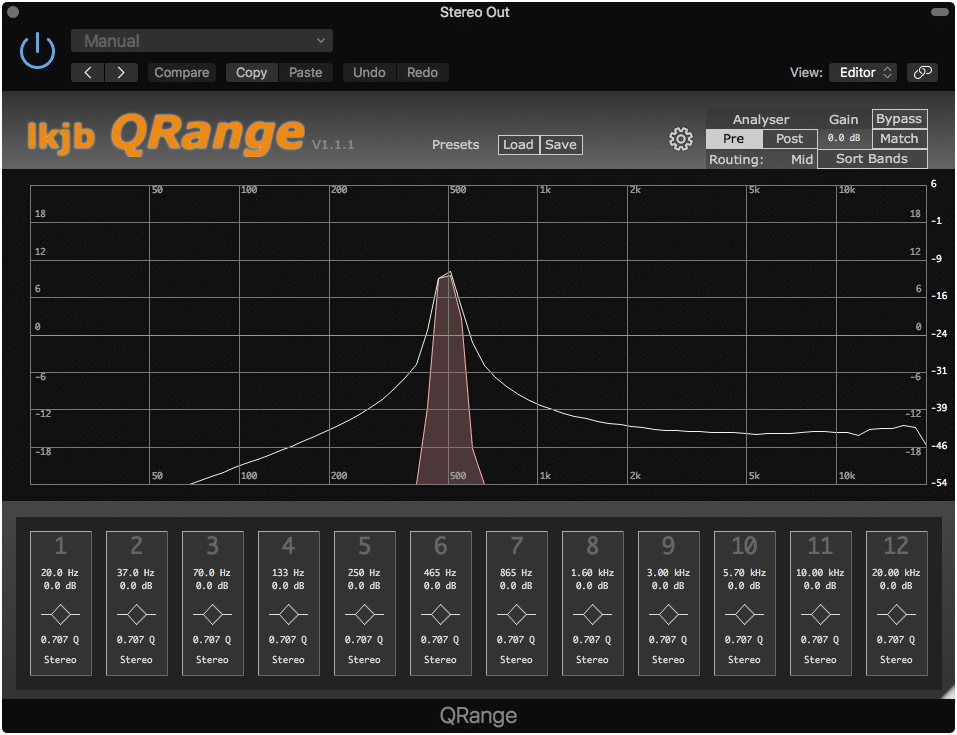
The QRange offers 12 possible Eq bands.
If you require more than just 3 or 4 bands for equalization then the QRange is a great and affordable (free) option for you. With up to 12 bands , with Q’s ranging from 0.3 to 16 , this QRange offers immense flexibility and the ability for surgical equalization.

Each band can be vary is its stereo placement.
Furthermore, each band can be separated in Stereo, Mid, Side, Left, and Right channels , increasing the QRange’s flexibility. This makes it a great option for any stereo mastering session in which you want to affect the stereo imaging and frequency response simultaneously.

The QRange offers 5 phase options.
Just as importantly, you can adjust the linear phase using 5 various settings , making it suitable for any mastering situation in which clean processing is paramount.
An adjustable “Pre” and “Post” frequency analyzer allows you visualize your equalization’s effect, and to better understand your signal’s frequency spectrum.
The simplistic interface quickly allows you to easily alter your frequency response and stereo image.
Possible Applications:
- Equalizing individual instruments
- Implementing broadband, natural-sounding equalization
- Implementing precise, surgical equalization
- Stereo Mastering
- Stereo imaging
If you’d like to learn more about mastering and stereo imaging, take a look at our blog post on the topic:
It details a step by step process for mastering your music.
5. LCF: Analog Obsession

The LCF is a simple plugin.
Unlike the other candidates on this list, the LCF didn’t make it on by the complexity of its design or the flexibility it offers. In truth, the LCF does 2 things; it acts as a low pass filter and a high pass filter.
So why has it made it on this list considering this functionality is available in almost every equalizer? In short, the LCF emulates analog equipment in an accurate, or at least sonically pleasing manner.

The LCF generates odd-order harmonics.
In fact, of the many plugins I downloaded to test the top free equalizers - the LCF will be one of the few that stays in my ‘components’ folder.
The reason being, it introduces intricate harmonic generation in the mid-range and high frequencies. The harmonics are numerous, and oddly ordered, resulting in an intricate sound.
Interestingly enough, these harmonics remain in the signal when you begin to attenuate the frequencies they occupy, while the frequencies originally in the signal are affected. This suggests that the high-pass and low-pass filter utilize a low dB to octave cut.
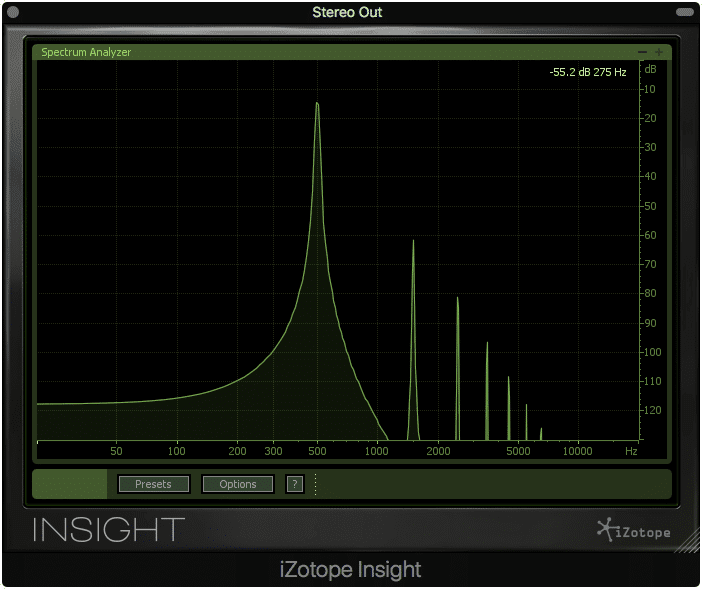
Even when attenuated, these harmonics remain in the signal.
Although this isn’t conventional, it does offer a unique effect that you can’t accomplish elsewhere without multiple forms of processing. This makes Analog Obsession’s LCF a great option to add some character to your instrument or stem quickly.
The high-pass filter ranges from 45Hz to 360Hz, while the low-pass filter ranges from 8kHz to 2kHz. But, if all you want is some analog emulation, leave these filters off and simply let the LCF harmonic generation do its work.
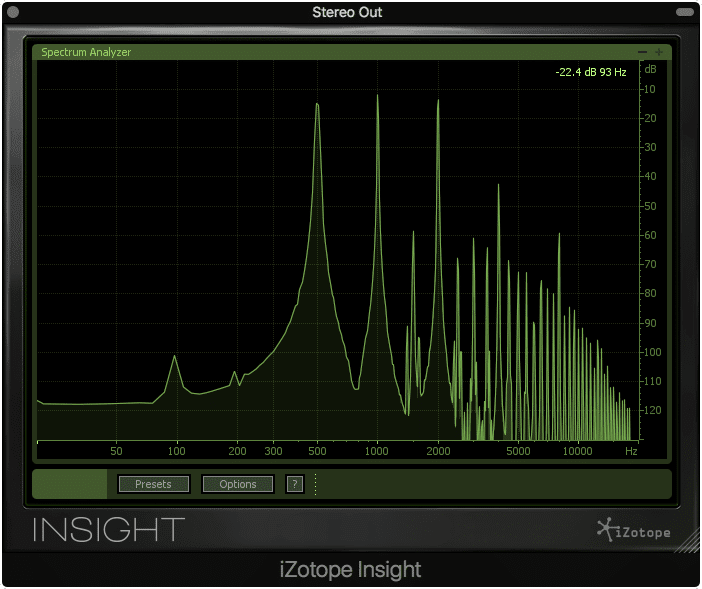
Notice how complex these harmonics become when introducing a more complex signal.
Possible Applications:
- Equalizing individual instruments
- Implementing harmonic generation
If you need some harmonic generation added to your mixes, maybe from some analog processing, send us your mix here:
We’ll master it using solely analog equipment, and send you a free mastered sample.
4. Rare: Analog Obsession
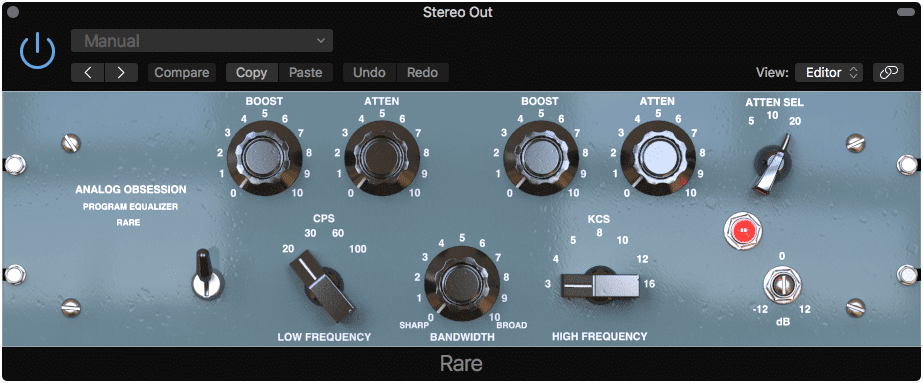
The Rare more adequately emulates the EQP-1A.
Like the PTEq-1A listed as number 3, the Rare models itself off of the famous Pultec EQP-1A. Unlike the PTEq-1A it offers a better, more accurate design, and more complex harmonic generation.

Its harmonic generation is unique and more complex.
In fact, the Rare arguably rivals the Waves PuigTec EQP1A, their take on a Pultec emulation. Granted, the Waves plugin does offer more complex harmonic generation and a VU meter, the Rare is a somewhat close second.
One benefit of using the Rare is the true bypass switch it offers. Using this switch turned off both the equalizer and the harmonic generation, whereas the Waves model only bypasses the equalization. This, of course, can become an issue if you’ve assumed that the bypass switch turned all aspects of the plugin off.
The interface of the Rare is visually pleasing, and closely replicates what one would expect when looking at a Pultec. If you want the next best thing to the Waves PuigTec EQP1A, the Rare is a great place to start.
Possible Applications:
- Equalizing individual instruments
- Implementing broadband, natural-sounding equalization
- Implementing “Tube” based harmonic generation
- Stereo Mastering
3. SonEQ: Sonimus
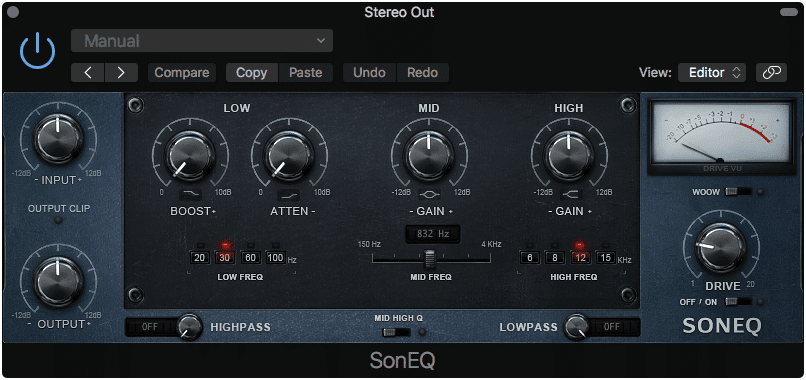
The SonEQ offers a simplistic design with some unique features.
The SonEQ is a 3 band equalizer and includes a “low-pass” , as well as a “high-pass” filter. The interface is simplistic and is good for creating natural-sounding, broadband equalization curves.
The low and high bands implement a shelf filter, whereas the mid-band uses a bell curve. The low band and high band are adjustable in 4 increments , whereas the mid-channel is sweepable from 150Hz to 4kHz.
Design-wise, Sonimus made some interesting, albeit unnecessary choices. The primary offense is a “VU” meter that is used to measure the drive function - essentially this “VU” doesn’t truly serve a purpose, as it simply indicates that more harmonics are being added , something any user would understand by simply increasing the drive function.

The drive function, at its highest levels, introduces first, second, and third-order harmonics.
Additionally, a “Woow” function has been added, which supposedly alters the phase relationship to introduce a “psychoacoustic” effect; however, it appears that this function is simply a phase inverter.
Despite these small qualms with the plugin, it does offer something that many other free plugins do not: an output clip indicator.
This is incredibly important when trying to avoid clipping between plugins, as the channel fader may not always indicate this clipping if there is an additional form of processing inserted after the cause of this clipping.
Lastly, the drive function offers harmonic generation which can be increased or decreased in amplitude.
Possible Applications:
- Equalizing individual instruments
- Implementing broadband, natural-sounding equalization
- Implementing based harmonic generation
- Stereo Mastering
2. Overtone GEQ: Voxengo

The Overtone GEQ offers harmonic generation and complex routing options.
Voxengo is no stranger to producing exceptional and unique plugins. In fact, it’s possible that the only reason this plugin was released for free was to see to what extent something this unique had any market appeal.
Spend 5 minutes with this plugin, and you’ll understand how much Voxengo values flexibility and customization (you can even change the color of your interface).
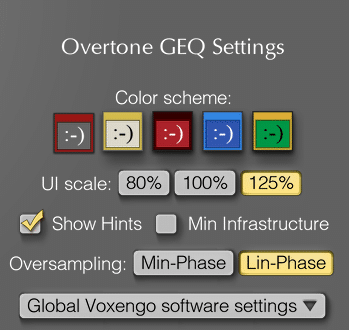
The GEQ's interface is customizable.
The Overtone GEQ introduces harmonic generation, relative to each of the 7 bands it allows you to control. These bands can process the signal as a stereo, a 5.1 surround, a mid-side stereo, and many other various options.
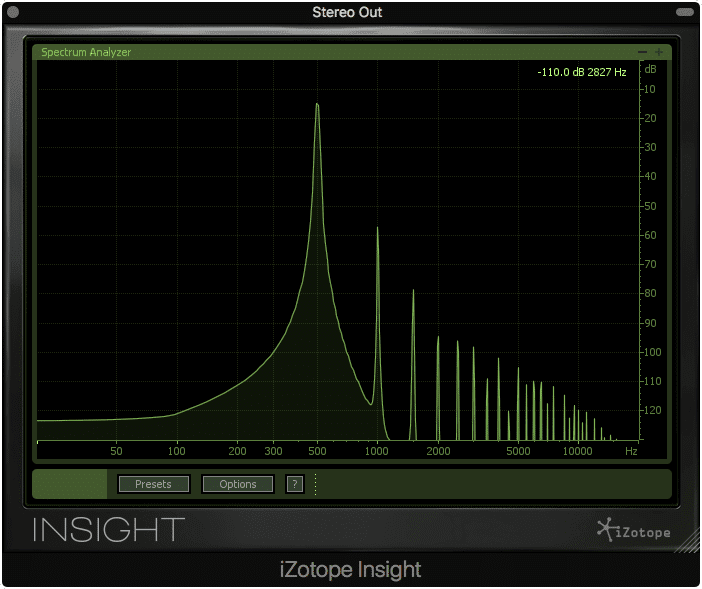
The harmonics it introduces are more complex and numbered.
Additionally, the routing capabilities of the Overtone GEQ require some time to understand as they can become complex quickly, given this plugin’s emphasis on flexibility.
Lastly, you can increase the oversampling of the plugin up to 8 times the native sampling rate (although doing so will most likely be unnecessary for most stereo applications).
Keep in mind that all of these options results in a higher CPU.
Possible Applications:
- Implementing harmonic generation
- Stereo Mastering
1. Marvel GEQ: Voxengo

The Marvel GEQ is a great and flexible equalizer.
Similar to the Overtone GEQ, the Marvel GEQ offers immense routing options and plugin customization. It also offers linear phase equalization and supports up to 8 inputs.
The 16 band EQ is truly versatile, and be as simple or as complex as you want. Although it doesn’t harmonic generation or drive , as the previous Voxengo plugin mentioned, it does offer the ability to equalize an entire mix with one plugin.

This plugin offers an immense amount of routing options.
Again, the routing options are incredibly complex, and can adequately handle most audio applications, from broadcasting and streaming, to mixing and mastering.
Although this may be more than most need, it’s a great and versatile plugin that can be downloaded for free.
Possible Applications:
- Equalizing individual instruments
- Surgical Equalization
- Stereo Mastering Equalization
Bonus: One Plugin I Genuinely Don't Understand

If anyone has any insight on this plugin, please let us know!
When searching for these plugins, I came across a lot that were highly rated, and seemingly enjoyed by many. One of the most popular I came across was the “Luftikus” by lkjb (same makers of the TinyQ and QRange plugins listed above.)
Given the immense popularity of the plugin (37 votes resulting in an overall rating of 4.8 stars out of 5 on VST4Free) I expected the plugin to be great; however, when testing it I came across some very unexpected results.
When increasing the gain of any of its 5 reportedly half-octave bands , the entirety of my signal was amplified. By this, I don't mean that the overall dB of my signal was increased, I mean that all frequencies were amplified - not just the one I tried to intentionally amplify.
After some testing, I found thatinstead of a half-octave Q as reported by the developer, the Q of each of the 5 bands was closer to 6 octaves - which would explain why increasing the amplitude of one band would increase the amplitude of all other frequencies.
Additionally, the 40kHz shelf seems to have the same issue. Increasing the amplitude of this 40kHz frequency seems to somehow amplify frequencies as low as 20Hz.
Despite these issues, people seem to love this plugin.
This isn't to say you shouldn't download it - after all, it is free ; however, at this point, I'm not entirely sure what it can be used for.
Want to learn more about how Q’s can affect the bandwidth, and can easily be set to octave-based settings? Take a look at our blog post:
It shows you some shortcuts to remembering the right Q settings for a particular octave.
How to Easily Install Plugins on Your Mac
If you’re a Mac user, but you have some difficulty installing plugins like the ones listed above, follow these simple directions.
Step 1: Download the AU unit from the developer. A VST may also be available, but more often than not, the AU unit will work, and the VST will not unless an installer was included.

The Mac AU option is your best bet.
Step 2: Find your ‘Components’ folder. To find this type in the name of your hard drive in your spotlight search bar. After clicking on your hard drive open ‘Library’ , then ‘Audio’ then ‘Plug-Ins’ and then ‘Components.’

The components folder contains the majority of your plugin components.
Step 3: Drag and drop the AU unit into the ‘Components’ folder. If given the option, used the 64-but component, as this will most likely be the correct bit-depth for your DAW.
Step 4: With the AU unit in the ‘Components’ folder, open your DAW. The plugin should automatically show up in your available inserts list. If not, scan your plugins and try again.
Conclusion
Hopefully, some of these plugins will be useful to you. If you’re ever curious how to determine if a plugin offers some new functionality you don’t have with your other plugins, don’t hesitate to test it out using some test tones and a frequency analyzer.
Regardless, some of the plugins listed above offer some of the functionality that popular and sought after plugins offer. If you're looking to save a little money on the software side of things, or maybe you only want a few basic plugins, these plugins will all work well.
If you’re looking to have your music mastered, using analog equipment, not plugins, you can send it to us here:
We’ll master it for you, and send you a free mastered sample of your mix.
Have You Tried Any of These Plugins?




